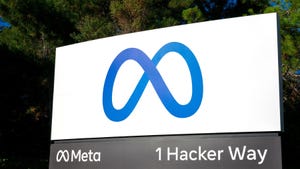IBM Has Open Sourced Its Edge Device Platform and Wishes AWS and Microsoft Got On BoardIBM Has Open Sourced Its Edge Device Platform and Wishes AWS and Microsoft Got On Board
IBM's Open Horizon is meant to make it easier to manage thousands of IoT devices as edge computing nodes.
July 2, 2020

After more than four years spent building an edge-device management platform, IBM recently open sourced it, contributing it to an effort within the Linux Foundation to create an open framework for edge computing. An executive in charge of the company's edge computing unit said that while some major enterprise tech vendors have gotten on board, he wished the world's two biggest public cloud providers, Amazon and Microsoft, would do the same.
"We've got good support from the other vendors," Rob High, an IBM VP and CTO of IBM Edge Computing, said in an interview with DCK. "I will admit that I would be much happier if Microsoft were on board. I think that that would be a great move on their part. I'd be even happier if Amazon would stop being so proprietary and move into an open source space. But those are both aspirations, and hopefully we'll get there with them someday too. But in the meantime, we've got Dell, HP has been talking to us, Cisco, and Intel.
"We just joined Intel's Open Retail Initiative, and we're hoping to now influence that entire ecosystem of vendors who have now embedded Intel chips into the retail equipment," he added. "We're talking about digital signage, ordering kiosks, point of sale terminals, self-service checkout terminals, et cettera."
Called Open Horizon, the technology is the backbone of IBM's proprietary Edge Application Manager, but according to High, it was designed as an open source project from the beginning.
"We deliberately started by creating an open source project," he said. "Truly open. There are no IBM namespaces in there; there's nothing in the logic that ties that open source back to our IBM cloud or anything like that. We've enlisted third parties to start participating with us in contributing to it."
IBM contributed Open Horizon to Linux Foundation's LF Edge, an umbrella organization for a series of projects all focused on building the open edge computing framework, in May. LF Edge was created in 2019 with five projects, anchored by the EdgeX Foundry platform for IoT. The number of projects has since grown to eight, Open Horizon being the eighth addition.
Like EdgeX Foundry, Open Horizon is designed to be useful in the IoT realm, enabling management of up to 10,000 edge nodes, but it's also used to manage machine learning workloads from a single location. That's getting increasingly important, as more and more familiar everyday devices come with compute onboard. They are the "edge" Open Horizon addresses.
"All the automobile manufacturers right now are going through the process of essentially re-architecting their automobiles to aggregate their compute power into a open system structure that allows for a lot more flexibility and to bring in more software onto the vehicle," High said. "Or if not automobiles, you can think about intelligent cameras, industrial robots, assembly machines on the factory floor, conveyor belts, point of sale terminals, ticketing kiosks, ATMs, all these are examples. By infusing compute into those product, it unlocks a whole lot of value. It opens up a whole new array of economic choices around how you make the utility of those device upgradable, expandable, more flexible."
According to him, leaving smartphones out of the mix, IBM estimates that there are currently about 15 billion edge devices already in use, which it reckons will grow to 55 billion by 2022 and to 250 billion by 2025.
As every piece of equipment in a company becomes a computer, the complexity of IT's domain greatly increases. In addition to sheer numbers and the fact that compute is no longer confined to data centers and employee workstations, it means more processor types, operating systems, vendor-supplied software, DevOps requirements, and the like. As factory robots and public facing kiosks become connected to the network, it also means new security concerns.
One of the things Open Horizon does is reconcile all the different policies the various parties set, be they device vendors, software developers, or admins.
"Open Horizon has two elements to it," High explained. "It has what we call a management hub, which is a centrally located place where you can publish new container workloads, where you can configure policies, and where you can monitor and manage the deployment of those workloads out to edge devices. The second part is a thing we call the agent. The agent is actually installed on individual devices and clusters. The agent is responsible for being a party in the negotiation over the decision to place workloads onto that node."
Typically, he pointed out, the equipment manufacturer supplies the node policy defining the properties, conditions, and constraints associated with that node; software developers supply service policies that describe the software and its properties, and the administrator sets deployment policies, which generally add further conditions to the developer-supplied service policies.
With Open Horizon, these policies can all be set separately, and the platform will then manage the devices, including updates from any sector, with little to no input required from IT teams.
Its community-based open source development means that as the project gains traction, it will better fit user needs, since open source makes users part of the development process, High said.
About the Author
You May Also Like







